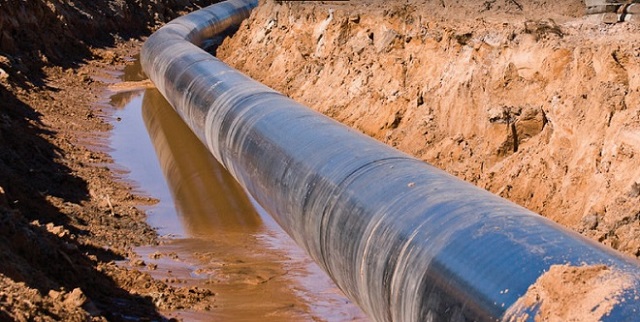
Kampala, Uganda | THE INDEPENDENT | The Civil Society Coalition on Oil and Gas (CSCO) has snubbed the Environment and Social Impact Assessment- ESIA, on the planned East African Crude Oil Pipeline, saying its lacking in all aspects.
The 1,443km crude oil export pipeline will transport Uganda’s crude oil from Hoima in Uganda to the Chongoleani peninsula near Tanga port in Tanzania. The pipeline envisaged to be the longest electrically heated pipeline in the world, will cross through 10 districts in Uganda, a distance of 296 kilometres and 25 districts in Tanzania, covering eight regions and 25 districts.
According to the agreed plan, it will start close to Lake Albert in Hoima through Kikuube, Kakumiro, Kyankwanzi, Mubende, Gomba, Sembabule, Lwengo, Kyotera and Rakai and cross the Tanzania border between Masaka and Bukoba, and traverse Tanzania through Kahama, Singida, Kondoa, into Tanga.
But ahead of its construction, the governments undertook studies to establish the potential impacts of the project on the natural and the human environment along the said route. The report from these studies was submitted to the National Environment Management Authority-NEMA, early this year by Total East Africa Midstream-TEAM BV, the interim developer of the pipeline.
The report highlights the potential impacts of the pipeline on the economy, people, and the environment along the suggested route which, among others, has plants of conservation importance, one of which is listed by the International Union for Conservation of Nature as vulnerable and six are on the Ugandan Red List as critically endangered.
The same area is home to 13 types of animals that are nationally and or globally rare and threatened. These include the Bohor reedbuck, African golden cat, hippopotamus and spot-necked otter, among others.
However, civil society players have challenged the report and raised 60 queries which they say need to be addressed before construction of the pipeline takes shape.
James Muhindo, the National Coordinator of the Civil Society Coalition on Oil and gas says that the assessment was basing on provisions of the repealed National Environment Act, 1995 yet it is going to be implemented under a new law which sets some new compliance requirements for Greenhouse Gas Emissions, among others.
Muhindo adds that the magnitude and sensitivity of the impacts are underrated in most parts of the report and ranked as non-significant. some of the critical issues which are said to be underrated include; impacts during operation phase such as leakages and spills, soil compaction and erosion, among others.
Similarly, Dickens Kamugisha, the Executive Director of Africa Institute for Energy Governance notes that whereas the Environmental and Social Impact Assessment highlights eighteen risks, it does not offer details of the mitigation plans which poses a danger on how the said measures will be practically applied.
Kamugisha stresses that the report seems to consider plans as mitigation measures and recommends that NEMA should advise the developers to analyses the impacts and propose mitigation measures.
NEMA is currently holding public hearings from different project affected areas. The meetings bringing together SOs, government entities and project affected persons, among others, have so far been held in Kakumiro and Mubende districts.
The organizations also challenged the unjustified bigger right of way arguing that whereas the International best practices for a pipeline construction Right of way is 15 meters, the developers are suggesting 30 meters.
“A bigger Right of Way means a bigger footprint along the pipeline length yet there is no reason for deviation from international best practices,” they observed.
They equally asked the developer to stipulate the recommended distance of homesteads and community businesses from the pipeline Right of way to ensure pipeline integrity, avoidance of accidents and vandalizing of the installations that lie above the ground.
The CSOs also point out the generalized data on weather and climate of the different districts which they say is wrong because each or some of them fall in different homogeneous climatological regions.
On behalf of the local governments, Mubende District Chairperson Francis Kibuuka Amooti noted that NEMA should put special emphasis on water and biodiversity in the area as the project seemS to be passing in a number of wetlands which are the major sources of water to the water-stressed areas of Mubende, Gomba and Sembabule.
Kibuuka cautions that if this area is poorly handled, it spells doom for the communities around.
But the Environment and Social Impact Assessment Report indicates that the selection of the pipeline route considered the need to avoid environmentally and socially sensitive areas and that the pipeline will be constructed along existing infrastructure corridors where feasible. It adds that the project aims to cause no overall loss of plant and animal diversity.
The report adds that the construction of the pipeline will come with a number of benefits to the communities, which include, among others, the upgrade of the EACOP project access roads and the third-party road upgrades and a general economic boost due to the beneficial cumulative impacts from employment, training and purchasing associated with the EACOP project.
Dr Tom Okurut, the Executive Director of the National Environment Management Authority-NEMA says that NEMA will study the different submissions and issue ESIA certificates by December 15, with conditions to the project developers to consider the issues raised by the various stakeholders.
******
URN
 The Independent Uganda: You get the Truth we Pay the Price
The Independent Uganda: You get the Truth we Pay the Price


